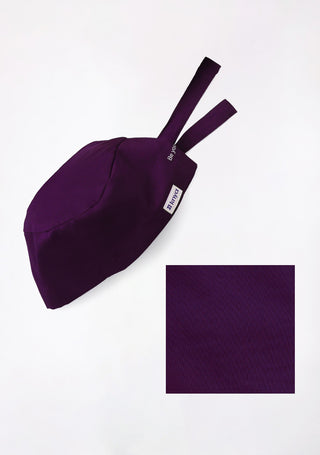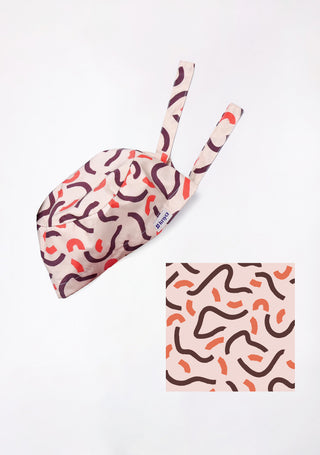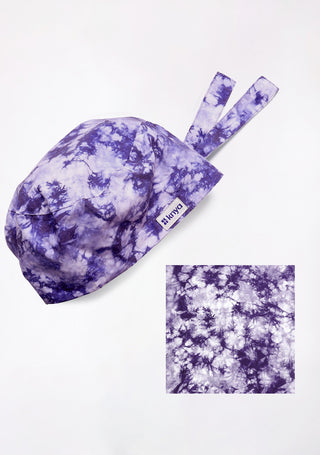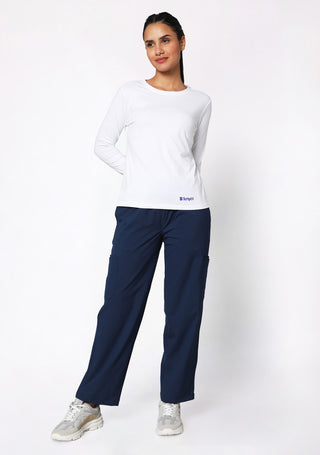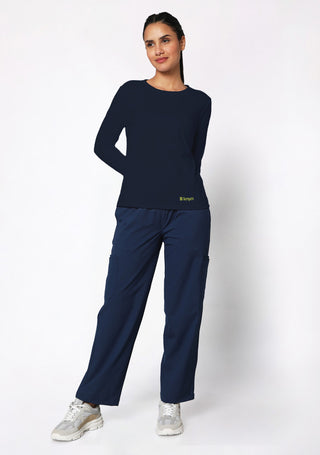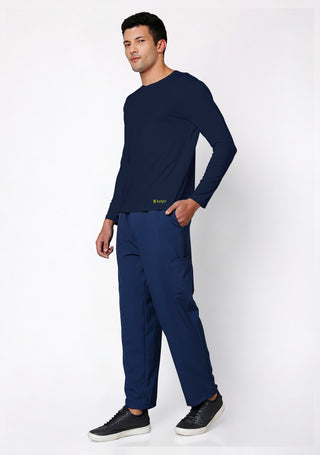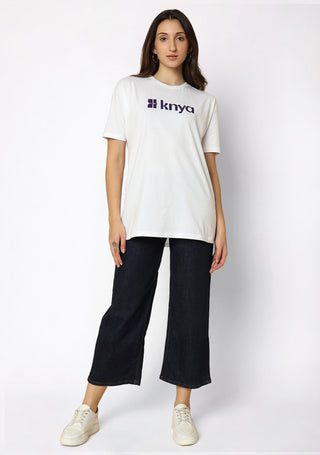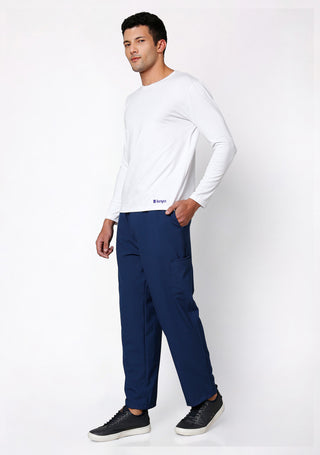Scrubs and regular clothes differ significantly in terms of purpose, material, hygiene, comfort, and professionalism. Scrubs are essential for medical professionals because they provide a clean, functional, and cost-effective uniform that meets the demands of healthcare environments. On the other hand, regular clothes are designed for everyday life, offering variety, personal expression, and fashion appeal. While both types of clothing serve different roles, scrubs remain the gold standard in healthcare due to their practicality, safety, and durability.
Purpose and Functionality
Scrubs: Designed for Healthcare
Scrubs are specifically designed for medical professionals, including doctors, nurses, surgeons, and other healthcare workers. Their primary function is to provide a clean, hygienic, and practical uniform that allows professionals to perform their duties efficiently. Scrubs serve several important purposes:
-
Infection Control: Scrubs are made from materials that can be easily disinfected and laundered at high temperatures to remove bacteria, viruses, and contaminants.
-
Ease of Movement: Medical professionals work long shifts that require bending, stretching, and quick movements. Scrubs are designed to be comfortable and non-restrictive.
-
Identification: Many hospitals and healthcare facilities have color-coded scrubs to distinguish different roles (e.g., nurses in blue, surgeons in green).
-
Cost-Effective: Scrubs are relatively inexpensive compared to regular clothes, making it easier for hospitals and workers to replace them when needed.
Click here to Explore All Women's Scrubs and discover our complete collection of comfortable and stylish medical apparel
Regular Clothes: Everyday Wear
Regular clothes, on the other hand, are designed for general use. They serve a wide range of purposes, including:
-
Personal Expression: People wear different outfits based on their personal style, cultural influences, and social occasions.
-
Weather Adaptability: Regular clothes come in various materials suited for different climates—cotton for summer, wool for winter, and waterproof fabrics for rainy days.
-
Fashion and Trends: Unlike scrubs, which have a standard design, regular clothes follow fashion trends and vary in design, colors, and patterns.
-
Variety of Occasions: Regular clothes are worn for work, leisure, sports, parties, and formal events, whereas scrubs are limited to medical settings.
Material and Fabric
The material used for scrubs differs significantly from regular clothing.
Scrubs: Durable and Easy to Clean
Most scrubs are made from a blend of cotton, polyester, and spandex, which makes them:
-
Breathable: To keep medical professionals cool during long shifts.
-
Moisture-Wicking: Many scrubs are designed to absorb sweat and liquids quickly.
-
Resistant to Stains and Fluids: Some scrubs have antimicrobial coatings to resist bacteria and stains.
- Easy to Wash and Sterilize: Scrubs undergo frequent laundering at high temperatures to kill germs.
Regular Clothes: Variety of Fabrics
Regular clothes are made from a wide range of materials, including:
-
Cotton: Soft, breathable, and comfortable but prone to shrinking.
-
Silk: Luxurious and smooth but delicate and hard to clean.
-
Denim: Durable and stylish but less flexible.
-
Polyester: Wrinkle-resistant and quick-drying but less breathable.
-
Wool: Warm and insulating but prone to shrinking.
Unlike scrubs, regular clothes are not designed for high-temperature washing or chemical disinfection, making them less suitable for medical environments.
Fit and Comfort
Comfort is essential in both scrubs and regular clothes, but they are designed with different priorities.
Scrubs: Loose and Functional Fit
Scrubs are typically loose-fitting to allow easy movement and ventilation. The design considers:
-
Flexibility: Stretchable materials ensure ease of movement.
-
Minimal Seams and Pockets: Reduces places where bacteria can accumulate.
-
Unisex or Gender-Specific Designs: Many scrubs are made for a universal fit, though some brands offer tailored options.
Regular Clothes: Varied Fit Options
Regular clothes come in different fits such as slim, regular, and oversized, based on fashion trends and individual preference. Some clothing items prioritize aesthetics over comfort, leading to:
-
Tight-Fitting Clothes: Stylish but may restrict movement.
-
Layering: People wear multiple layers depending on the weather.
-
Accessory Usage: Belts, ties, scarves, and jewelry, which are not typically part of scrubs.
Hygiene and Cleanliness
Scrubs: High Standards of Cleanliness
- Medical professionals are exposed to bodily fluids, chemicals, and bacteria. Scrubs are laundered in hospital-grade disinfectants to eliminate contamination.
- Some facilities provide hospital-issued scrubs that are changed at the workplace rather than being taken home.
- Many hospitals have "scrub zones", restricting their use to prevent cross-contamination.
Regular Clothes: Less Hygiene-Focused
- People wash their regular clothes based on personal habits, and they may not be cleaned as frequently as scrubs.
- Some materials in regular clothes may not withstand high-temperature washing.
- Regular clothes are not designed to prevent the spread of germs, making them unsuitable for medical environments.
Ready to explore our amazing scrubs collection? Browse the best here
Professionalism and Perception
Scrubs: Symbol of Healthcare
Scrubs are immediately recognizable as medical attire, creating an image of professionalism, trust, and cleanliness. When patients see healthcare workers in scrubs, they feel reassured that they are receiving care from trained professionals.
Regular Clothes: Personalized Appearance
Regular clothes allow people to express their identity and personal taste. Depending on the industry, formal attire (such as suits or business casual) is expected, while casual wear is acceptable in relaxed work environments. However, in healthcare settings, regular clothes can be seen as unprofessional or unhygienic.
Cost and Accessibility
Scrubs: Affordable and Practical
- Scrubs are generally cheaper than most regular clothes because they are mass-produced and designed for functionality rather than fashion.
- Many healthcare institutions provide scrubs for free or at a subsidized cost.
- Scrubs last long even with frequent washing, making them a cost-effective choice.
Regular Clothes: Price Variation
- The price of regular clothes varies widely based on brand, fabric, and design.
- High-end designer clothes can be very expensive, while budget-friendly options are available at retail stores.
- Regular clothes may not be as durable as scrubs in a high-activity environment.
Storage and Pockets
Scrubs: Functional Pockets
Most scrubs come with multiple pockets to hold essential tools like pens, thermometers, bandages, and medical instruments. Some scrubs even have special compartments for carrying phones, gloves, and ID badges.
Regular Clothes: Fashion Over Function
- Some clothes have pockets, but they are not always designed for carrying essential work tools.
- Women’s fashion, in particular, often features small or decorative pockets rather than functional ones.
- Professional attire such as suits may have limited pocket space compared to scrubs.

